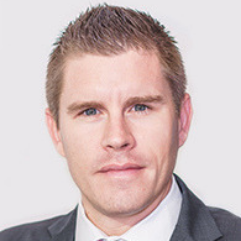The trick is to properly size the plant and equipment to maximise energy efficiency, minimise cost and also ensure achievement of design conditions, says Director – MEP, WME Global
Dubai, UAE, 16 October 2018: Sharing his thoughts on common design flaws of high-rise projects in the Middle East, Nicholas Byczynski, Director – MEP, WME Global, said that there is a culture of “overestimation” of loads in the UAE, with margin and safety factors being over-used and diversity in operation, under-used. “This, I feel, is typically borne out of time and fee pressure in that the consequence of over-sizing is limited to the client in that the system will perform, whereas an under-sized system may not achieve the design criteria,” he said. “The trick is to properly size plant and equipment to maximise energy efficiency, minimise cost and also ensure achievement of design conditions.” Byczynski added that WME employs a number of methods to achieve this, including the use of 3D dynamic modelling of projects to refine bulk load estimation from software, such as HAP or TRACE. However, he stressed that the designer’s skill set is still a key factor and that it is important “to interrogate assumptions and loads to ensure there are no unnecessary over-provisions included”.

Nicholas Byczynski
Byczynski added that Delta T problems are also a constant challenge associated with many large-scale projects and that the prevalence of District Cooling and the associated penalty charges is bringing the issue to the forefront, more than ever before. “This is an issue that is often completely misunderstood with its roots in design decisions but also heavily influenced in construction and then in building operations,” he said. “In this case the discontinuity of personnel and even companies that you often see through the project lifecycle is really under-lined and the adoption of a system similar to the CIBSE ‘Soft-landings’ Framework used in the UK could be of assistance.”
Byczynski added that while he believes in the value of greater investment in better maintenance of HVACR systems, to prolong equipment life, and avoid the capex that may come with having to retrofit down the line, from his observations, the market remains fully focused on capex rather than long-term operational costs. “Minimising MEP space as a percentage of GFA and Value Engineering remains many of our clients’ primary concern,” he said. Byczynski said that he believes engineering services have been heavily “commoditised” in the region, “with percentage of construction cost or AED/m2 often considered above many other factors. We would all like greater fees; however, rather than complain about this, the industry needs to recognise the cost constraints of the market and adapt to them, so we can still win and deliver work to a high standard, given these commercial realities.”
In such a market, Byczynski said, the winners will be the consultants who are capable of streamlining their processes, that can best utilise technology and minimise or eliminate costly rework through effective QA. “In the long term these consultancies will go from strength to strength and those that are unable to consistently deliver quality will be quickly identified,” he added.
Nicholas Byczynski, Director – MEP, WME Global, will be conducting a seminar on ‘Ventilation in super-tall buildings’, from 4pm–4:45pm on November 28, at the HVAC R Expo part of the Big 5 Dubai.
Hannah Jo Uy is Assistant Editor at Climate Control Middle East magazine. She may be contacted at hannah@cpi-industry.com
Copyright © 2006-2025 - CPI Industry. All rights reserved.